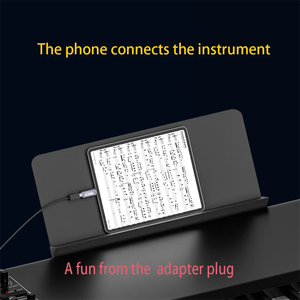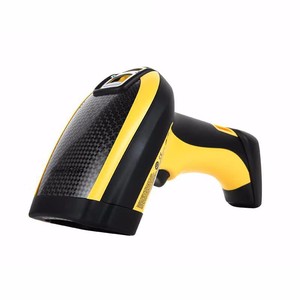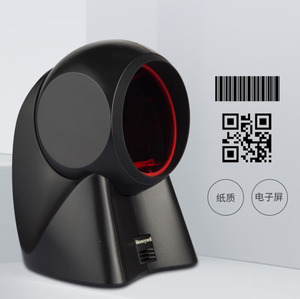Types of Keyboard Wedge Scanners
Keyboard wedge scanner is a kind of barcode scanner that is connected between a computer and a keyboard. When a barcode is scanned, the encoded data is sent to the computer in the same way that text would be typed on the keyboard. Keyboard wedge scanners are popular because they can be easily installed and provide accurate data entry.
Businesses can choose from different kinds of keyboard wedge scanner types, depending on their preferences:
- Wired scanners: These keyboard wedge scanners are connected directly to the computer via a cable. They are reliable and secure because they have a physical connection. However, wired scanners can be less flexible as they require cables that could clutter workspaces and limit movement.
- Wireless scanners: Wireless keyboard wedge scanners use radio frequency (RF) or Bluetooth technology to transmit data wirelessly to the computer. This version offers greater mobility and flexibility since it eliminates the need for a physical connection. Wireless scanners allow users to move freely within the working area while scanning barcodes. On the downside, wireless scanners may need to be charged regularly, and there are some concerns about data security and signal interference.
- Voice-activated scanners: These advanced keyword wedge scanners convert the spoken command into text. They use automatic speech recognition (ASR) technology to capture, process, and send the verbal command to the computer. Voice-activated scanners free up the hands of users and can enhance productivity in workplaces. However, they may be more expensive than traditional scanners and require a quiet working environment for optimal performance.
Other types can be classified based on how they decode barcodes:
- Laser scanners: These accurate and long-range scanners use laser beams to read one-dimensional barcodes. Laser scanners are often used in linear barcode scanning applications such as inventory management and asset tracking.
- Imaging scanners: Imaging scanners capture an image of the barcode and use software to decode it. They can read both one-dimensional (1D) and two-dimensional (2D) barcodes. The wedges can also scan barcodes from printed labels, smartphone screens, and other digital displays.
- CCD scanners: Charge-coupled device (CCD) scanners are similar to laser scanners. They have several light sensors that read barcodes. CCD scanners work well for short-range scanning tasks and are commonly used for retail point-of-sale systems.
Feature and Function of Keyboard Wedge Scanner
Apart from its vital role in converting barcodes into electronic data, the keyboard wedge scanner comes with different features that enable businesses to operate more efficiently.
- Scanning speed: Every scanner has a unique scanning speed that depends largely on the model and manufacturer. High-speed scanners are essential for businesses that operate in high-volume environments. Fast scanning improves productivity by minimizing the time taken to scan each barcode. On the other hand, slow scanning is preferred in businesses where accuracy is more important than speed.
- Scanning depth: To accurately decode barcodes, scanners require the scanning depth which is the physical distance between the scanner and the object being scanned. Scanning depth varies from one model to another. Scanners with long scanning depth work well in warehouses and storage areas because they can barcode labels from a distance. Short scanning depths are important for tight spaces.
- Data read format: Scanners can read different data formats, including QR codes, alphanumeric, and PDF417. The ability to decode various formats improves flexibility in data capturing.
- Connectivity options: Wedge scanners come with different connectivity options for integrating them into existing systems. Connectivity options include USB, PS/2, COM ports, and wireless connections like Bluetooth and Wi-Fi.
- Operating systems: Keyboard wedge scanners operate on different systems like Windows, Linux, and Android. Windows and Linux scanners are common but Android is quickly gaining popularity. The choice of operating system affects the availability of scanning applications and compatibility with other devices.
- Scanner durability: Durability is an important factor to consider while choosing a wedge scanner. It is determined by the materials used to make the scanner, the type of environmental conditions, and the degree of wear and tear the scanner is exposed to. Scanners used in high-traffic and harsh environments require extra durability for longevity.
- Power supply: Different wedge scanners require different power supply systems to work. The most common power supply systems are corded and cordless. Corded barcode scanners are powered by the cable connection to the wedge port, while cordless scanners use rechargeable batteries.
Applications of Keyboard Wedge Scanners
Keyboard wedge barcode scanners find usage in diverse industries and businesses owing to their ability to boost efficiency and accuracy in data entry. Common applications of these scanners include the following:
-
Retail and Sales Management
In retail stores, keyboard wedge barcode scanners are applied to scan product barcodes during sales transactions, inventory management, and price checks. They help to speed up the checkout process and reduce human errors in data entry.
-
Manufacturing and Production
Manufacturers also apply keyboard wedge scanners in a variety of production processes. They can be used to scan barcodes on raw materials, finished goods, and work orders. This ensures accurate tracking and effectively helps with quality control. Additionally, some manufacturers use wedge scanners to gain access to information on barcodes. This allows them to closely monitor product specifications and enhance their quality control processes.
-
Warehouse and Inventory Management
Wedge scanners play a vital role in warehouse operations and inventory management. They help with real-time inventory tracking, stock level monitoring, and order picking activities. Keyboard scanners improve operational efficiency in these environments by decreasing human errors and streamlining the data entry process.
-
Asset Tracking and Management
Businesses apply keyboard wedge scanners to track and manage their assets. Be it equipment, tools or any other assets, these scanners can be used to assign barcodes to each asset. The barcode scanners are then used to scan and log data on location, status and identification. This ensures effective asset management and prevents loss or duplication of assets.
-
Healthcare and Patient Management
The aforementioned keyboard wedge barcode scanners can be used in healthcare facilities for patient management, medication administration and charting activities. Healthcare professionals can scan barcodes on patient wristbands, medications and documentation to ensure accurate and timely data entry.
-
Document Management and Data Capture
These barcode scanners are also used in various industries for document management and data capture purposes. Simply put, businesses apply keyboard wedge scanners to scan barcodes on documents. This allows them to automate data extraction processes such as invoice processing and receipt data entry.
How to Choose a Keyboard Wedge Scanner
When purchasing a scanner, businesses must consider what type of scanner will best fit their operational needs. This will help them streamline their purchase process and avoid costly mistakes. When it comes to choosing a keyboard wedge scanner, it is important to understand that not all keyboard scanners are the same. Different models and types may vary in features and functionalities. Therefore, it is essential to understand the differences so as to make an informed decision.
- Facility: One must identify the kind of work that needs to be completed. In this case, is it only data entry, or does the scanner need to be used for other purposes? The volume of work also plays a pivotal role in choosing the right kind of scanner. Daily or regular work would require a different model than one that is used frequently.
- Environment: The environment where the scanner will be used plays a pivotal role in determining the choice of scanner. If the scanner is to be used in a clean, dry office-like environment, any model will work fine. However, when it is to be used in a slightly harsher environment, one should consider choosing a more durable model.
- Integration: Integration, or in other words, compatibility, is very important, and one must ensure that the model they are choosing is compatible with their existing system and can be integrated successfully. This will help avoid any operational issues later as the scanner can be integrated smoothly into the existing system, thus making the workflow smooth and trouble-free.
- Features: The keyboard wedge scanner comes with a number of features, and each model varies with respect to features. These may include cordless or corded, audio feedback, laser scanning, and the ability to scan in various lighting conditions. One must carefully consider the features and choose the kind of scanner that fulfills the requisite operational needs.
- Budget: Budget is the most important and pivotal point when deciding on any product. It is equally important to bear in mind expenses after the model has been chosen. Keeping in mind initial expenses and after-sales expenses will guide the decision-making process. Some vendors offer better after-sales service, which may make purchasing this model easier for decision-makers.
Q&A
Q1. What is the purpose of the Wedge Barcode Scanner?
A1. Inaccessible areas like narrow spaces between machines or tight-fitting items can be scanned with the help of the Wedge Barcode Scanner. It is made up of a scanner and a connecting device.
Q2. How does a wedge scanner work?
A2. When the barcode is scanned, the barcode's numbers or letters get transformed into an electronic signal. This electronic signal is then sent to the computer or the specified location.
Q3. What are the advantages of a wedge scanner?
A3. Wedge scanners increase accuracy, streamline operations, and save time while providing simple data input from barcodes. They are also integrated easily into current systems and help in reducing manual data entry errors.
Q4. How to choose a wedge scanner?
A4. Deciding which kind of wedge scanner is needed depends on the kind of barcode and the scanner's reading requirement. Evaluating the scanner's quality, accuracy, and performance is also important. Further choosing a wedge scanner depends on the buying budget and kind of interface.
Q5. What is the role of Wedge Scanner in the future?
A5. The Wedge Scanner plays an important role in areas like Artificial Intelligence, integrated scanning, and data real-time processing. With the help of integrated scanning, data real time processing and analytics are also improved. The Wedge Scanner also helps in faster and more accurate decision making with the help of AI.




































































































































































































